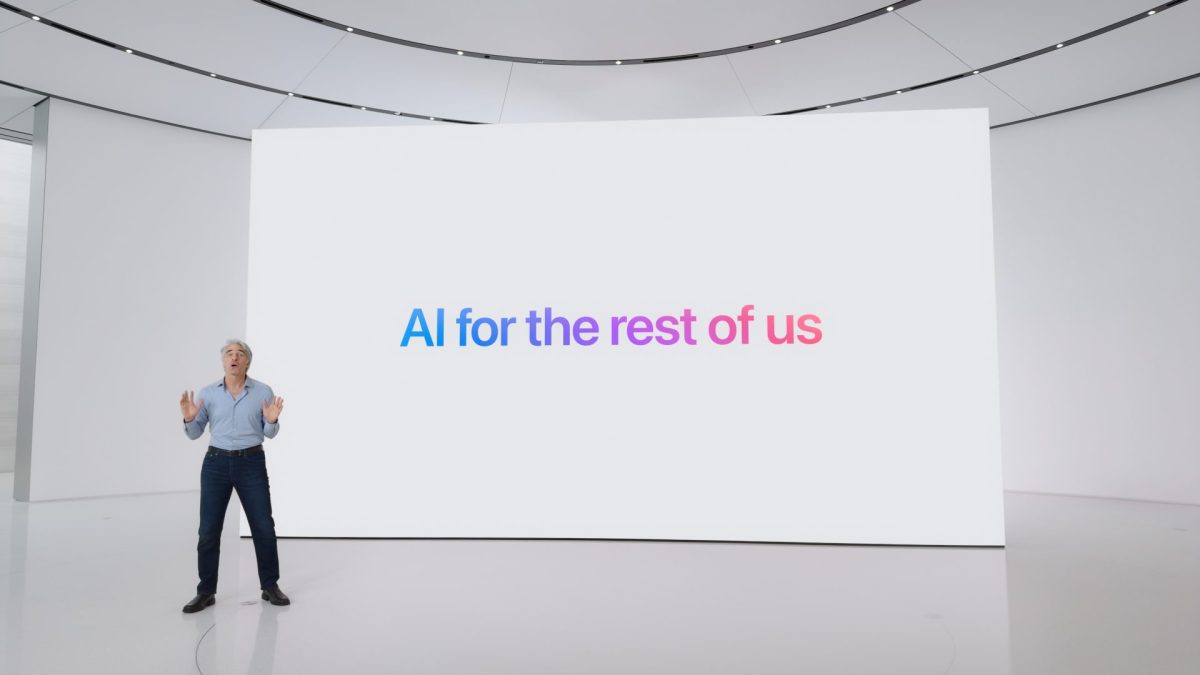In the ever-evolving landscape of technology, Apple’s latest advancements in artificial intelligence are making waves. If you’ve recently upgraded to a newer iPhone, you may have noticed the emergence of Apple’s AI capabilities in popular applications such as Messages, Mail, and Notes. Launched in October 2024, this innovative technology is set to redefine user experiences as Apple positions itself against competitors like Google and OpenAI in the race for superior AI tools.

Cupertino’s marketing team has aptly dubbed this initiative “AI for the rest of us,” emphasizing its goal to enhance existing features through generative AI’s strengths, such as text and image creation. Similar to other AI platforms, Apple’s AI was developed using extensive information models, employing deep learning techniques to establish connections across various media, including text, images, and audio.
The text generation capabilities, powered by large language models, are integrated into several Apple applications, offering tools for writing assistance. Users can benefit from features that summarize lengthy texts, proofread content, and even draft messages based on specific prompts regarding tone and content.
Image generation is another exciting aspect of this technology, allowing users to create custom emojis, referred to as Genmojis, in a distinctive Apple style. Additionally, the Image Playground app enables users to generate visual content through prompts, which can be utilized in Messages, Keynote, or shared on social media platforms.
One of the most anticipated updates is the revitalization of Siri, Apple’s virtual assistant. Once a pioneer in the field, Siri had seen little innovation in recent years. However, with deeper integration into Apple’s operating systems, users will now notice a more interactive experience, indicated by a glowing light around their iPhone screen when Siri is active.
Moreover, the new Siri can operate across multiple applications, allowing for seamless tasks such as editing a photo and sending it directly in a text message. This enhanced contextual awareness enables Siri to provide more relevant responses based on the user’s current activities.
As we approach the next major developer conference, expectations are high for an even more advanced version of Siri. However, the release of this personalized assistant has been delayed due to ongoing development challenges, as reported by industry insiders.
At the recent conference, Apple introduced a groundbreaking feature called Visual Intelligence, which facilitates image searches while browsing. Additionally, the Live Translation feature promises real-time translation capabilities across Messages, FaceTime, and Phone applications, set to launch in late 2025.
Apple’s AI initiative was unveiled amidst a flurry of generative AI announcements from other tech giants, leading to speculation about whether Apple had fallen behind. However, the company had been diligently working on a unique approach to AI, focusing on practical applications rather than flashy demonstrations.
Rather than being a standalone feature, Apple’s AI is designed to integrate seamlessly into existing applications, enhancing user experiences without overwhelming them with new interfaces. The technology operates primarily in the background, providing new functionalities that enrich current apps.
During the iPhone 16 event, Apple showcased a variety of AI-driven features, including translation capabilities on the Apple Watch and visual search functionalities on iPhones. The initial rollout of Apple’s AI features began in October 2024, with updates for iOS, iPadOS, and macOS.
Initially available in U.S. English, Apple plans to expand support to various English dialects and other languages, including Chinese, French, German, and Spanish, by 2025.

The first wave of AI features included integrated writing tools, image enhancements, and a revamped Siri experience. A subsequent update introduced additional functionalities, such as Genmoji and Image Playground, further expanding the capabilities of Apple’s AI offerings.
These features are accessible for free to users with compatible devices, including the latest iPhone models and select iPads and Macs. Notably, only the Pro versions of the iPhone 15 support these advanced features due to hardware limitations in the standard model.

Unlike other AI platforms that rely on external servers for processing, Apple’s approach emphasizes on-device capabilities, reducing resource demands and enhancing privacy. While simpler tasks can be handled locally, more complex queries may utilize Apple’s Private Cloud Compute, ensuring user data remains secure.
Despite initial rumors of a partnership with OpenAI, it appears that the collaboration is more about providing alternative solutions rather than powering Apple’s AI directly. This reflects an understanding of the limitations inherent in a small-model system.
Apple’s AI features are free to use, with additional integrations planned for services like ChatGPT, enhancing Siri’s knowledge base and writing capabilities. Users can prompt Siri to access ChatGPT for specific queries, expanding the assistant’s functionality.
Looking ahead, Apple is set to collaborate with more generative AI services, with plans to integrate Google’s Gemini into its ecosystem. The introduction of the Foundation Models framework will allow developers to leverage Apple’s AI models offline, fostering innovation in third-party applications.
As Apple continues to refine its AI offerings, users can expect a more personalized and intelligent experience across their devices, all while maintaining a strong commitment to privacy and user control.
